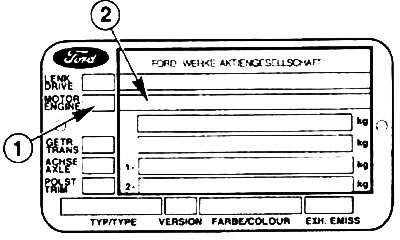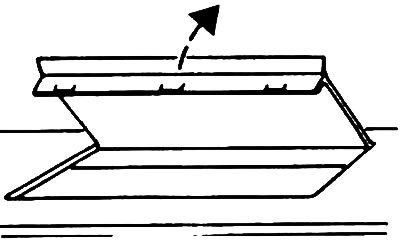Cylinders are located in the cylinder block made of gray cast iron. In case of heavy wear of the cylinders or the formation of grooves on the walls, they can be honed in a specialized workshop. In cylinders after honing, pistons must be installed with an interference fit. The crankshaft is located at the bottom of the cylinder block. bearings serve as fulcrums. The connecting rods connected to the pistons communicate through rolling bearings with the crankshaft. At the very bottom of the cylinder block is an oil pan, where the oil is located, which is necessary for lubricating and cooling the engine. On top of the cylinder block is the cylinder head
Depending on the model, either a DOHC gasoline engine or an ONC diesel engine is used.
Gasoline engines
DOHC engines (Double Overhead Camshaft = two overhead camshafts) use two camshafts located in the cylinder head. One camshaft controls the exhaust valves, the other controls the intake. Both camshafts are driven by the crankshaft via a toothed belt. The camshafts actuate the valves by acting on them through hydraulic poppet lifters (valve clearance compensators), in the presence of which there is no need to adjust the valve clearances.
Cylinder head made of light metal (aluminum), when it was created, the principle of horizontal flows was used. This means that fresh air/fuel mixture enters from one side of the cylinder head while the exhaust gases are expelled from the opposite side. Horizontal flows ensure rapid gas exchange.
The cylinder block houses the coolant pump, which, like the camshafts, is driven by a toothed belt. The gear oil pump is driven directly by the crankshaft via a pinion. A multi-point injection system is used to prepare an ignitable air-fuel mixture. Ignition is carried out by an ignition system without a distributor, i.e. the traditional ignition distributor is replaced by electronic elements. Auxiliary units such as generator, servo pump, air conditioning compressor are driven by a V-belt that does not require maintenance.
Diesel engines
ONS term (Overhead Camshaft) indicates that the camshaft is located on top of the cylinder head. The cylinder head and cylinder block are made of gray cast iron. The crankshaft drives the camshaft and coolant pump via a toothed belt. The perpendicularly spaced valves are actuated by the camshaft directly through poppet lifters. Valve clearances should be checked regularly as part of each service, and shims of appropriate thickness are used to adjust clearances.
The second toothed belt drives the injector distribution pump, which generates the pressure required for diesel fuel injection.
Auxiliary units such as alternator, servo pump and A/C compressor are driven by a separate V-belt.
Attention! The electric cooling fan may turn on by itself when the engine is off and the ignition is on. Due to the heat accumulated in the engine compartment, this can happen repeatedly. Therefore, when the engine is hot, the possibility of unexpected start-up of the fan should always be taken into account. Therefore, when working in the engine compartment, if possible, always turn off the ignition.
The engine number is stamped on the cylinder block; in gasoline engines, the number is located at the height of the starter; in addition, it is located on the cylinder head near the gearbox; in diesel engines, the number is on the left above the high-pressure fuel pump.

The engine code -1- is located on the rating plate located at the front in the engine compartment. The model year and month are coded in the chassis number -2-.

Digit 1: Asterisk (*)
Digits 2, 3 and 4: International Affiliates of the Manufacturer
- SFA - Ford Motor Company Ltd. Great Britain
- WFO - Ford Werke AG, Germany (European models)
- WFO - Ford Werke AG, Germany (US models)
- UN1 - Henry Ford &Son Ltd - Ireland
- XLC - NVNederland Ford - Netherlands
- VS6 - Ford Espana SA - Spain
- TW2 - Ford Lusitana SARL - Portugal
- 9BF - Ford - Brazil
Numbers 5-11: model options
- BF - Four-door limousine
- VA - Five-door limousine
- BN - Combi (Tournament) four-door
Digits 6 and 7: XX (filling places)
Digit 8: Manufacturer
- B - Ford England - own production
- G - Ford Germany - own production
- C - Ford England - assembly by other branches of the concern
- E - Ford Germany - assembly by other subsidiaries of the concern W - Ford Spain - own production
- L - Ford Brazil - own production
Rank 9: Assembly Plant
- A - Dagenham/Cologne/Ipiranga
- B - Halevud/Genk/San Bernado
- C - Langley/Sagarloops
- K - Reine
- N - Amsterdam
- R - Valencia/Acembyu
Digit 10: Model Series
- B - Mondeo
Digit 12: Year of manufacture
- N - 1992; R - 1993; R - 1994; S - 1995; T - 1996; U - 1997;
Digit 13: Issue Month

Digits 14-18: Vehicle serial number (five-digit)
Digit 19: Asterisk (*)

The chassis number is located on the base of the load-bearing body on the passenger side under the plastic cover between the seat and the door sill.
Visitor comments